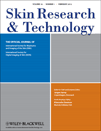Sonophoresis-mediated permeation and retention of peptide dendrimers across human epidermis
Abstract
Purpose: The objective of the present study was to assess the effect of sonophoresis on the permeation rate of peptide dendrimers through human skin.
Methods: Peptide dendrimers containing arginine and histidine as terminal amino acids and having varying positive charges (arginine group: R4, R8 and R16 dendrimers, having 4+, 8+ and 16+ charges, respectively; histidine group: H4, H8 and H16 dendrimers, having 4+, 8+ and 16+ charges, respectively) were synthesized by Fmoc solid-phase peptide synthesis. The in vitro skin permeation studies were conducted using vertical-type diffusion cells and ultrasound was applied using a probe sonicator to the donor solution. The effects of varying concentrations of dendrimer with differing pH of the donor solution on the permeation rate were studied.
Results: All the dendrimers exhibited significantly (P<0.05) higher permeation rates with the application of ultrasound in comparison with passive diffusion studies (without ultrasound). High concentrations of H4 and R4 dendrimers were found in the receptor media compared with other dendrimers at all the concentrations tested, indicating appreciable permeation of low-molecular-weight dendrimers across the skin, assisted by sonophoresis. The opposite was true when assessing dendrimer ‘retention’ in skin, where it was shown to improve upon increasing dendrimer generation/molecular weight. Negligible loss of all the dendrimers (<2%) during skin permeation studies indicates that neither skin nor ultrasound adversely affects the stability of dendrimers.
Conclusion: The present study reveals the successful application of sonophoresis in enhancing the permeation of peptide dendrimers across human skin.




